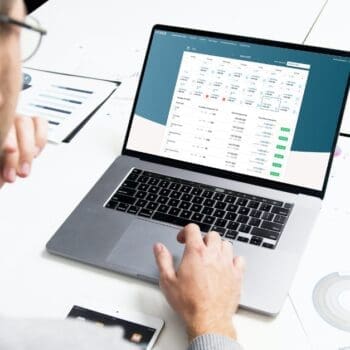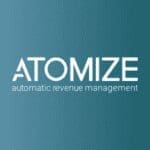 Advances in AI and automation have brought many changes to the hospitality industry over the past few years. They created the opportunity for hoteliers to collect and analyse enormous data sets, make well-informed decisions quickly and boost their overall results.
Advances in AI and automation have brought many changes to the hospitality industry over the past few years. They created the opportunity for hoteliers to collect and analyse enormous data sets, make well-informed decisions quickly and boost their overall results.
Revenue management in particular can benefit from AI-driven applications. These solutions supply real-time market knowledge that helps hoteliers improve, adapt, and even automate their pricing.
One concern remains, though. How can you make sure that the system’s responses completely align with your company’s business strategy? And what part does your team play in this?
This is where the importance of collaboration between humans and machines comes into play.
Working alongside artificial intelligence
Technological breakthroughs have been helping revenue managers streamline their processes and increase efficiency for many years. The first tools were able to handle things like data collection and compilation. As a result, revenue managers saved hours on these previously manual tasks. This left them with more time to focus on the strategic elements of their role.
Then came machine learning and artificial intelligence. They brought modern pricing algorithms which can suggest and set optimal prices automatically. This makes dynamic pricing accessible to more hotels and allows them to tap into new revenue opportunities.
All these developments have led to the following question: if these new solutions are so powerful, do we even still need revenue managers? Our answer: absolutely!
Think of airplanes and ships, for example. All of them have an autopilot setting, but they never depart without a captain or a pilot. These trained experts are needed because they can inspect the systems, adjust the course if required and handle the many other demanding tasks that go beyond even the best AI’s abilities.
The same goes for revenue management in hotels. Business intelligence and pricing solutions offer the support needed to considerably improve your results. But a degree of human guidance and input is critical if you want your system to abide by your rate strategy and your brand’s pricing guidelines.
Follow the three steps below to achieve this balance at your hotel and foster solid collaboration between your team and their AI-based helpers.
1. Build a strong foundation
AI tools have become excellent at completing simple tasks. But for them to do a good job, you must tell them what to do. For example, a plane can maintain the course on autopilot. But the pilot first needs to set the destination for that to work.
The same is true for hotels. Here, your commercial teams must define objectives and strategies for your AI system to follow.
For revenue managers, this includes determining revenue targets, identifying key guest segments, and defining inventory. The latter means defining room categories, creating a rate hierarchy and setting standard minimum and maximum room prices.
Input this information in your system when you first set it up and whenever you change your strategy. This gives the algorithm the structure it needs to always make optimal price suggestions that fit your hotel, brand and market.
2. Get ready for evolving situations
Every ship is likely to experience some weather changes while it’s at sea whether it’s higher waves or shifting winds. That can impact sailing speed and the ship’s course. A good guidance system can detect these changes and respond quickly to keep the ship safe in such circumstances.
Once again, this also holds true for hospitality. Here, demand goes up and down regularly and your RMS must be able to react and suggest the new optimal rate immediately. Today’s best systems are able to do that since they can access and analyze vast amounts of historical, real-time and future-facing data points. That way they ensure that your prices are always in line with current demand patterns.
If you like, you can provide extra guidelines to fine-tune your RMS’ suggestions. For example, use past and future-facing demand insights, event calendars and your knowledge of the market to identify high- and low-demand periods. Those could be traditional travel seasons like winter and summer, international trade fairs or public/school holidays. Once you’ve determined these phases, create special rules for them in your system, so it can better respond to the upcoming seasonal demand changes.
3. Adapt to unique circumstances
When a storm pops up out of nowhere, it’s essential to have emergency protocols in place to keep the ship out of trouble. The crew is just as important though since they’re the ones who can implement these protocols or step up in other ways if needed.
It’s the same in revenue management where you’ll sometimes see demand surge or drop without warning. That could be due to a famous singer cancelling a concert last minute or a big group sending a short-notice RFP. An AI-driven RMS can react well even in such special situations because it processes a wealth of data in moments. This helps your hotel capitalize on sudden demand spikes and avoid filling up on low rates in advance.
But of course, even a powerful RMS can’t fully handle every situation on its own. The revenue management team still holds a crucial role because they implement, oversee and update the framework that guides your system. If you want your RMS to react in a certain way, have your team prepare backup plans for specific circumstances. This could mean readjusting your rate hierarchy or changing price floors and ceilings. This chance to easily edit your pricing rules gives you the chance to stay flexible and competitive all while protecting your brand from price wars.
AI’s capabilities will continue to expand. But developing commercial strategies, creative problem solving and tasks that look at the bigger picture will remain humans’ key area of competence.
Having the right AI-powered solution by your side will make it easier to do this work better. And that’s where the collaboration between humans and technology takes center stage.
For it to work well, the right approach to implementing, using and running these systems is critical. That means clearly defining parameters, updating them when necessary, having confidence in your system but also knowing when to take charge yourself.
Especially with technology advancing further every day, finding the balance between autonomy and human involvement is the key.

































